Pomegranate Tree
- November 14, 2023
- 0 comment
The Pomegranate tree (Punica granatum) is a deciduous shrub or small tree that bears the vibrant and distinctive fruit known as the pomegranate. Native to the Middle East and parts of South Asia, this ancient fruit-bearing tree has been cultivated for centuries for its juicy, ruby-red seeds enclosed in a leathery, reddish-brown rind.
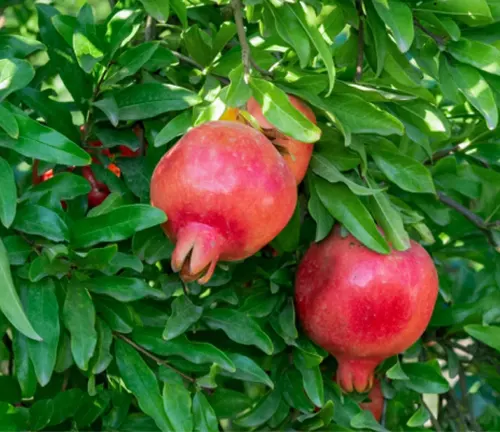
The pomegranate tree is characterized by its glossy, lance-shaped leaves and attractive, bright orange-red flowers that bloom in late spring to early summer. Beyond its ornamental value, the pomegranate tree holds cultural significance in various societies, symbolizing fertility, abundance, and prosperity.
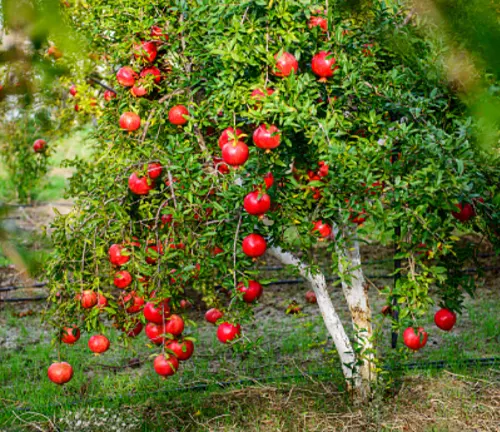
The fruit itself is not only visually striking but also renowned for its health benefits, containing antioxidants and essential nutrients. Pomegranate trees thrive in arid and subtropical climates, adapting well to a variety of soils. Their resilience and longevity make them a popular choice for home gardens and orchards, adding both aesthetic appeal and nutritional richness to the landscape.
| Characteristics | Description |
| Scientific Name | Punica granatum |
| Type | Deciduous shrub or small tree |
| Native Region | Middle East and parts of South Asia |
| Fruit | Pomegranate – round, leathery rind, containing juicy seeds |
| Leaves | Glossy, lance-shaped |
| Flowers | Bright orange-red, blooming in late spring to early summer |
| Cultural Significance | Symbolizes fertility, abundance, and prosperity |
| Health Benefits | Rich in antioxidants and essential nutrients |
| Climate Preference | Thrives in arid and subtropical climates |
| Soil Adaptability | Adapts well to a variety of soils |
| Lifespan | Long-lived and resilient |
| Common Uses | Ornamental, home gardens, and orchards |
Botanical Beauty of the Pomegranate Tree
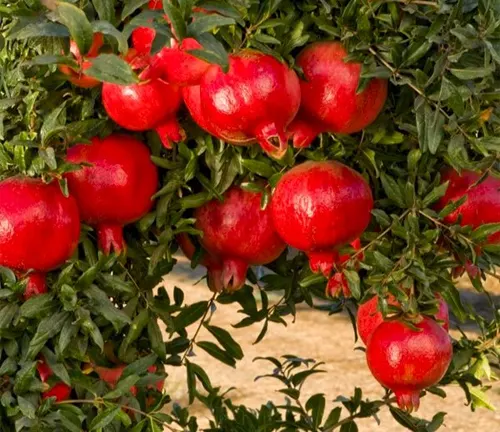
The Pomegranate tree, scientifically known as Punica granatum, stands as a testament to botanical beauty. With its glossy, lance-shaped leaves and vibrant, orange-red flowers that grace the landscape in late spring to early summer, this deciduous shrub or small tree captivates observers with its ornamental allure. The star of the show, however, is the pomegranate fruit itself, enclosed in a leathery, reddish-brown rind, harboring a treasure trove of juicy, ruby-red seeds. The aesthetic appeal of the Pomegranate tree extends beyond its visual splendor, weaving a story of natural elegance that has been appreciated for centuries.
Woodland Elegance
In the realm of botanical wonders, the Pomegranate tree stands out not just for its fruit, but also for its woodland elegance. Whether nestled in a home garden or gracing an orchard, these trees bring a touch of sophistication to their surroundings. Their gracefully arching branches and vibrant foliage create a picturesque scene, making them a sought-after choice for those seeking both visual appeal and natural grace in their outdoor spaces.
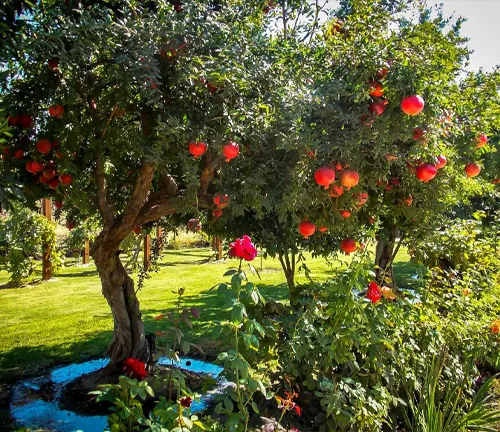
Ecological Importance
Beyond its ornamental value, the Pomegranate tree plays a vital role in the ecosystem. Native to the Middle East and parts of South Asia, it contributes to biodiversity by providing habitat and sustenance for various insects and birds. The tree’s flowers attract pollinators, and the fruit serves as a food source, forming a delicate ecological balance that underscores its significance in the natural world.
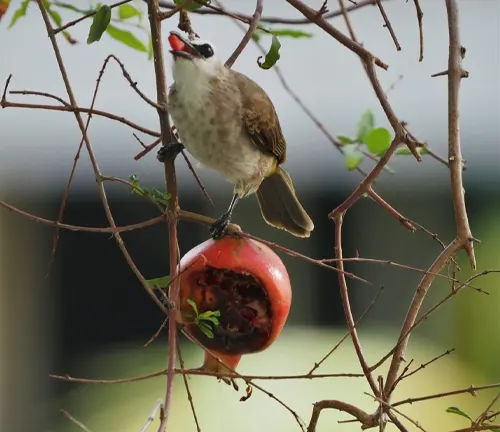
Cultivation and Conservation
Cultivating Pomegranate trees is a practice that spans centuries, reflecting the tree’s adaptability to different climates and soils. From arid landscapes to subtropical regions, these trees have found a home in diverse environments. However, as cultivation expands, the importance of conservation becomes evident. Preserving the genetic diversity of Pomegranate trees ensures the resilience of this species and safeguards its contribution to ecosystems and human culture.
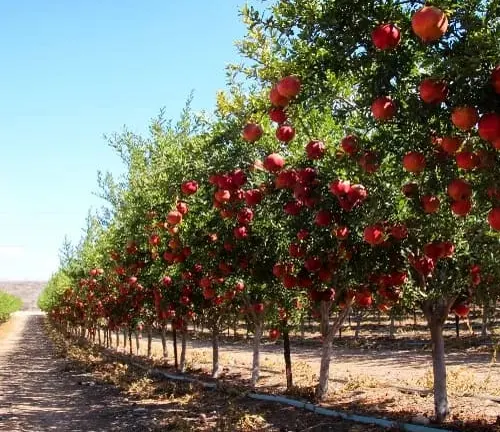
Fragrance
The Pomegranate tree not only pleases the eyes but also engages the sense of smell with its delightful fragrance. The blossoms emit a sweet and subtle scent, creating an aromatic ambiance that adds another layer to its appeal. This fragrant quality enhances the overall sensory experience, making the presence of a Pomegranate tree a multisensory delight.
Soil Stabilization
In addition to its visual and olfactory charms, the Pomegranate tree contributes to soil stabilization. Its roots, spreading and penetrating the ground, help prevent soil erosion. This quality makes it a valuable asset in landscapes where maintaining soil structure is crucial for environmental stability.
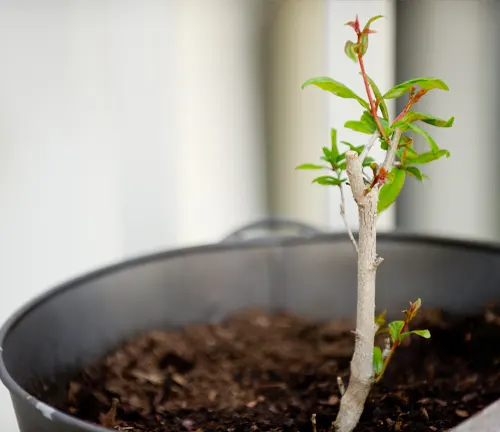
Common Uses
The Pomegranate tree is a versatile species with a range of common uses. Beyond its role in gardens and orchards, it is a symbol of cultural significance, representing fertility, abundance, and prosperity in various societies. The tree’s wood has also found application in different crafts, adding to its utility beyond its aesthetic and ecological contributions.
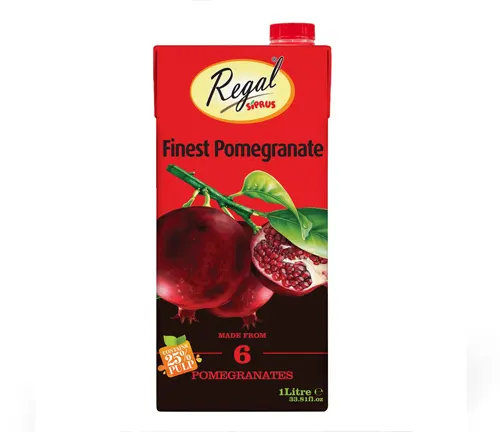
Benefits
Delving beyond its visual and cultural significance, the Pomegranate tree offers a bounty of health benefits. The pomegranate fruit is renowned for its antioxidant properties, and the seeds within are a rich source of essential nutrients. This nutritional wealth has made the Pomegranate tree a staple in traditional medicine and a popular choice for those seeking a naturally beneficial addition to their diet.
Different Species
Wonderful
The Wonderful Pomegranate is one of the most popular cultivars, known for its large, sweet, and flavorful red arils (seeds). It is widely cultivated for commercial purposes and is a common sight in grocery stores.
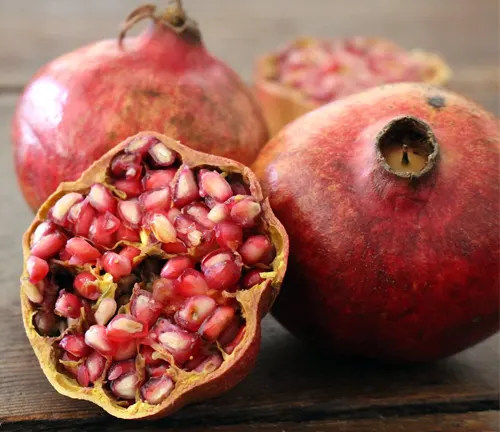
Nana
Also known as the Dwarf Pomegranate, this variety is characterized by its compact size, making it suitable for small gardens or container planting. It produces small, ornamental fruit and attractive flowers.
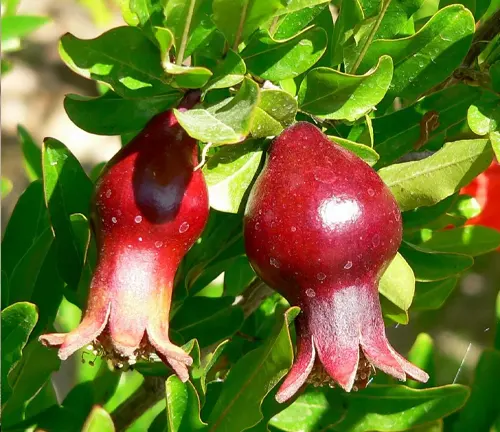
Salavatski
Originating from Russia, the Salavatski Pomegranate is cold-hardy and well-suited for regions with harsh winters. It produces large, deep-red fruit with a sweet and tart flavor.

Angel Red
This cultivar is prized for its bright red, juicy arils and is often grown for its ornamental value. The fruit has a good balance of sweetness and acidity.
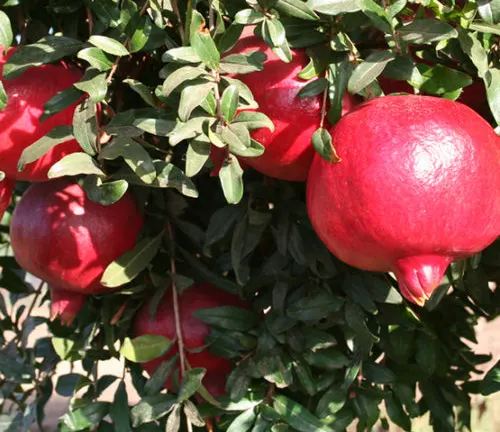
Grenada
The Grenada Pomegranate is known for its soft seeds and sweet-tart flavor. It is a medium-sized fruit with a distinctive pinkish-red color.
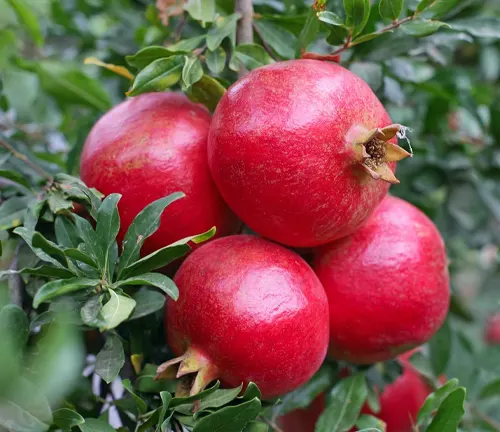
Parfianka
Recognized for its exceptionally sweet and aromatic seeds, the Parfianka Pomegranate is a favorite amoang enthusiasts. The fruit has a thin skin and is known for its high juice content.
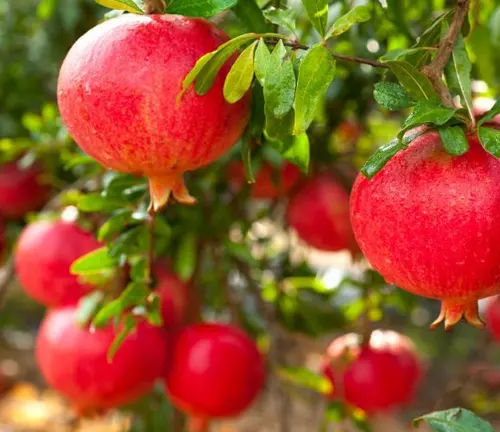
Eversweet
As the name suggests, the Eversweet cultivar is prized for its sweet and non-tart flavor. It produces medium-sized fruit and is a good choice for those who prefer a milder taste.
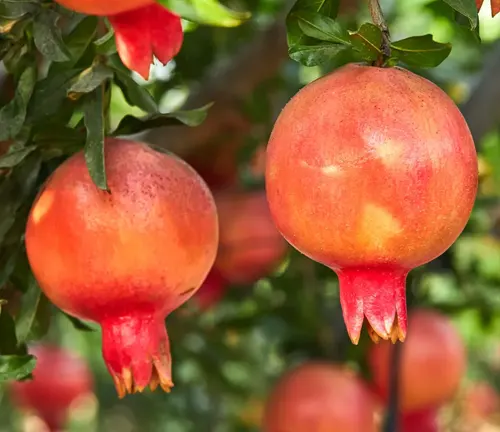
Ambrosia
This cultivar is renowned for its exceptionally sweet and juicy arils. The fruit has a distinctive pinkish-red color and is often considered a dessert variety.
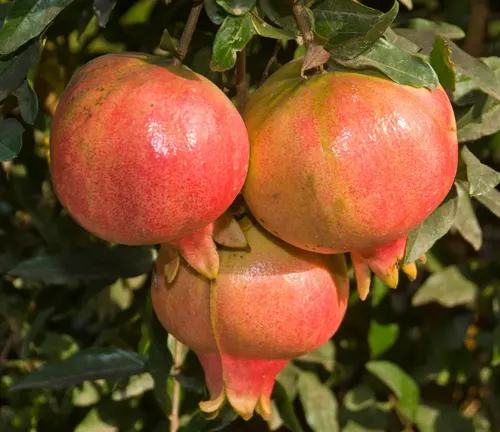
Chico
The Chico Pomegranate is characterized by its soft seeds and sweet flavor. It is a medium-sized fruit with a reddish-brown outer skin.
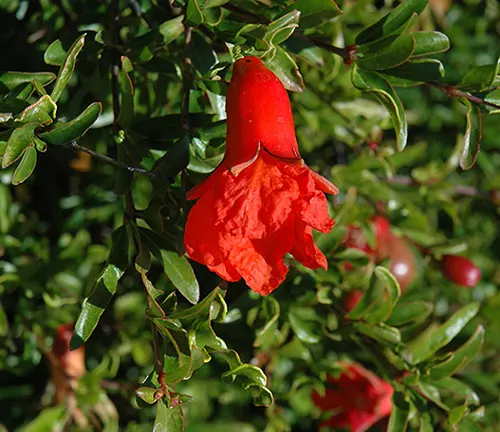
Haku Botan
Originating from Japan, the Haku Botan Pomegranate is known for its light pink flowers and medium-sized fruit. It is prized for its ornamental value as well as its sweet-tart flavor.
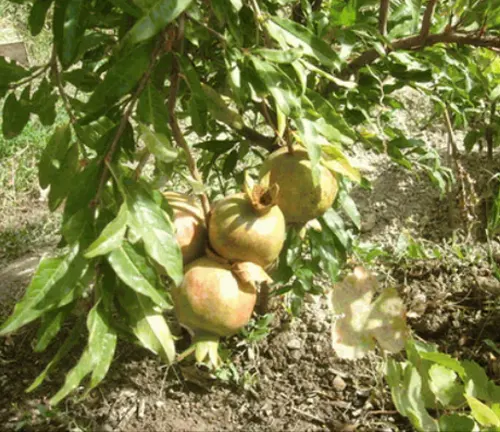
Frequently Asked Questions (FAQs)
- What is the scientific name of the Pomegranate tree?
The scientific name of the Pomegranate tree is Punica granatum. - Where is the Pomegranate tree native to?
The Pomegranate tree is native to the Middle East and parts of South Asia. - What are the common uses of the Pomegranate tree?
The Pomegranate tree is commonly used for ornamental purposes in gardens and orchards. It holds cultural significance and is also cultivated for its fruit, which is consumed fresh, juiced, or used in cooking and beverages. - Are there different species or varieties of Pomegranate trees?
Yes, there are various cultivars and varieties of Pomegranate trees, each with unique characteristics such as fruit size, color, and flavor. Some popular varieties include Wonderful, Nana (Dwarf Pomegranate), and Salavatski. - How do I care for a Pomegranate tree?
Pomegranate trees generally prefer well-drained soil and full sunlight. Regular watering is important, especially during dry periods. Pruning can help shape the tree and encourage fruit production. Mulching around the base can aid in moisture retention and weed control. - When is the best time to plant a Pomegranate tree?
The best time to plant a Pomegranate tree is typically in late winter to early spring. This allows the tree to establish its root system before the growing season. - How long does it take for a Pomegranate tree to bear fruit?
Pomegranate trees usually start bearing fruit within 1 to 3 years after planting. However, the exact time may vary based on factors such as the tree’s age, health, and growing conditions. - Is the Pomegranate tree drought-tolerant?
Yes, Pomegranate trees are known for their tolerance to drought conditions. However, they benefit from regular watering, especially during dry spells, to support optimal fruit development. - What are the health benefits of Pomegranate fruit?
Pomegranate fruit is rich in antioxidants and essential nutrients. It is believed to have various health benefits, including cardiovascular and anti-inflammatory properties. - Can Pomegranate trees be grown in containers?
Yes, certain dwarf varieties, such as the Nana (Dwarf Pomegranate), are well-suited for container planting. This makes them suitable for small gardens, patios, or balconies. - Are Pomegranate trees susceptible to pests and diseases?
While Pomegranate trees are relatively hardy, they can be affected by pests such as aphids and diseases like fungal infections. Regular inspection and appropriate pest management measures can help mitigate these issues. - How do I harvest Pomegranates?
Pomegranates are typically ready for harvest in the fall. Harvest by cutting the fruit from the tree, leaving a small piece of stem attached. The fruit can be stored in a cool, dry place for several weeks.


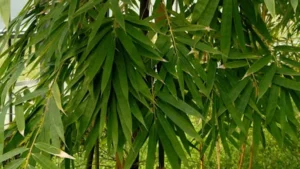
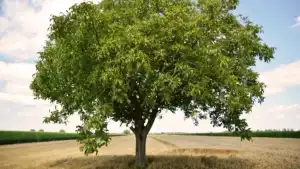
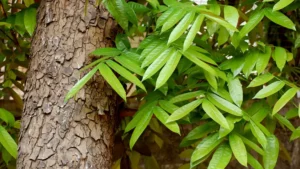

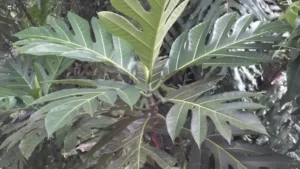
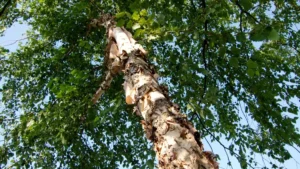
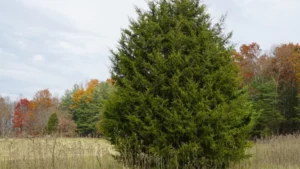




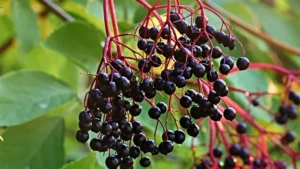
Leave your comment